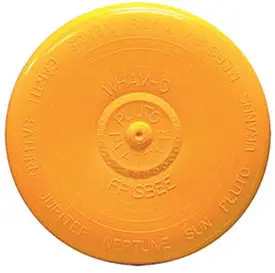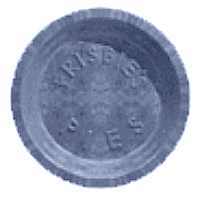The Invention of the Frisbee
The Frisbee that we commonly know today was first produced on January 13, 1957, by the Wham-O Company. Millions of flying discs later, Frisbees are now enjoyed around the world. The origins of the Frisbee are shrouded in mystery and competing claims. That the shape is reminiscent of a pie is not in dispute. Who came up with the idea for a plastic flying disc continues to be argued. The most popular story is that of a California man, Walter Morrison, obtaining the patent to make the Frisbee and then selling the rights to Wham-O, which marketed it as the major component of a new sport. According to one well-researched claim, Morrison had a lot of help, namely from a friend named Warren Franscioni, who helped Morrison invent what became the Frisbee but received none of the credit (the website alleges).
At any rate, Wham-O was selling hundreds of Frisbees in 1957, thousands not too many years later, and millions not long after that. A true craze was born. |
|
Social Studies for Kids
copyright 2002–2024
David White



 The product that Morrison later sold to Wham-O was called the Pluto Platter, mainly because it looked like a UFO (Unidentified Flying Object). This was the Cold War, the 1940s and 1950s, and fears of nuclear annihilation spawned fears of invasion from another planet. Two engineers from Wham-O, Rich Knerr and A.K. Melin, convinced Morrison to demonstrate his idea for their bosses, and a legend was born.
The product that Morrison later sold to Wham-O was called the Pluto Platter, mainly because it looked like a UFO (Unidentified Flying Object). This was the Cold War, the 1940s and 1950s, and fears of nuclear annihilation spawned fears of invasion from another planet. Two engineers from Wham-O, Rich Knerr and A.K. Melin, convinced Morrison to demonstrate his idea for their bosses, and a legend was born. The name Frisbee was made up by Knerr, who claimed to have heard it used on college campuses in New England. Coincidentally, one university, Yale, lays a claim to having invented a prototype of the Frisbee. As the story goes, Elihu Frisbie, a student in 1820, grabbed a round metal money collection tin and flung it in the air. There is also the Frisbie Baking Company, of Bridgeport, Conn., which naturally served its pies in round metal tins, which would have been eminently flingable. Knerr's version, though, had the double-e at the end.
The name Frisbee was made up by Knerr, who claimed to have heard it used on college campuses in New England. Coincidentally, one university, Yale, lays a claim to having invented a prototype of the Frisbee. As the story goes, Elihu Frisbie, a student in 1820, grabbed a round metal money collection tin and flung it in the air. There is also the Frisbie Baking Company, of Bridgeport, Conn., which naturally served its pies in round metal tins, which would have been eminently flingable. Knerr's version, though, had the double-e at the end.
